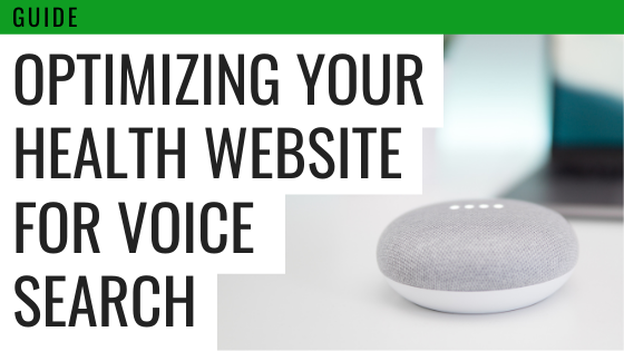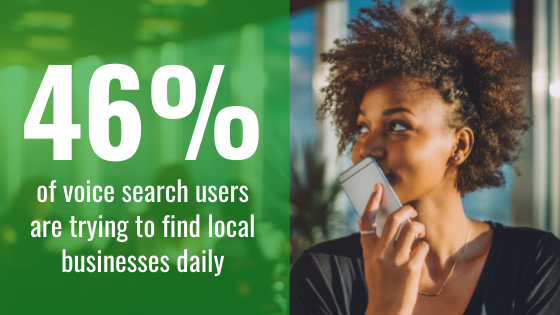Why do you need to optimize for voice search?
Because, voice assistants and other voice search-enabled mobile applications are available on most electronic devices, including smartphones, tablets, laptops, desktops, smart speakers, smart TVs, wearables and even cars. And by 2020, 30 to 50% of all searches will occur via voice.
More than two-thirds of people using mobile or embedded voice assistants are performing voice searches daily or weekly. Of these voice technology users, 50-60% are conducting online searches, finding out information on products, or asking questions with their voice assistants.
Almost half of Americans are using digital voice assistants -- and mostly on their smartphones. In fact, almost half of Americans using voice assistants on a smartphone report using them sometimes or all the time. They are using voice assistants to browse the internet, make calls, and send texts, and prefer using voice search to find things online versus typing.
In a survey by Zion & Zion, about 1 in 4 people reported using voice search for health-related information seeking. Of those people:
Text search optimization is no longer adequate. You need to optimize for voice search as well. How do you optimize content for voice search?
The previous question is an example. Voice engine optimization, or VEO, can include the following steps:
1. Writing content in a Q&A format.
Question - Switch from using keywords to key question phrases that your target audience are likely to use when searching for information.
Answer - Provide answers in your content.
2. Keeping your brand/organization's information updated and consistent.
Make sure your brand/organization's name, phone number, address, hours, and other information is correct and consistent across your different channels and listings. Conflicting information will get your content ranked low in search results.
3. Building non-branded keywords into your content.
Voice search queries are longer than text-based searches and are much more conversational in tone and style. For example, people aren’t asking their voice assistants to search “XYZ Clinic”. They are asking, "Where is XYZ Clinic?". Or "How far away is XYZ Clinic from me?".
In fact, more than two-thirds of impressions on local searches are from non-branded keywords, so they are really asking something like, “What’s the closest STD clinic near me?”. Or they're asking, “Is there free HIV testing around here?”. Including non-branded keyword phrases (like “free HIV testing near you,” “local STD testing,” or “free health clinic in X neighborhood”) versus branded keywords (like "XYZ Clinic hours") throughout your website and your other listings is key to driving people to your organization and its services.
4. Enhancing your website's HTML.
You could have the best Q&A content embedded throughout your website, but if your HTML isn't marking that content for search engines to find, you're doing your brand/organization a disservice.
5. Getting your content into a featured snippet on Google.
Almost 41% of all voice search answers come from a Google featured snippet. Featured snippets are those answer boxes that appear below the paid results and above the first organic results on Google search engine results pages. By earning a spot as a featured snippet, you increase the likelihood of your content being selected to answer a voice search query.
6. Distinguishing your brand audibly.
With voice technology, people's interaction with your brand is via sound only. There aren't visual cues, such as logos, to help users connect content with your specific brand. Don't get lost in the voice mix. Explore ways to distinguish your brand audibly.
7. Taking advantage of voice technology features early.
Amazon allows brands to own key phrases by building custom "Skills" in Alexa. Alexa users can subscribe and access brand content by searching the specific skill phrasing. Apple allows brands and users to create shortcuts to perform actions with brand apps. Siri users can use shortcuts to send messages, create lists, initiate calls, conduct searches, initiate a fitness routine, and more. Google allows brands to build "Actions" in the Google Assistant directory that respond to and fulfill user requests. Google Assistant users can interact with brand web or app content by issuing a command or starting a conversation. Microsoft is improving conversational computing so that Cortana can understand the context of questions and better integrate into the routines of workers (e.g., managing meeting invites, weather, contact information, and more).
How are health-related brands/organizations using voice technology?
Here are a few examples of how health-related brands and organizations are using voice technology to achieve their goals:
These brands/organizations have optimized their content for voice. If your goal is to reach your target audience in the digital space and to engage them around your health information, resources, providers, and/or services, you need to optimize your health website for voice as well.
Share your experiences with voice search and voice technology in the comments below. And sign up for our newsletter to get updates from us! Additional Resources:
Last updated: May 31, 2019
1 Comment
Your comment will be posted after it is approved.
Leave a Reply. |
�
Learn about our blog submission guidelines. >>
The views and opinions expressed by individual authors on this blog are their own and do not necessarily reflect the official policy or position of Let's Talk Public Health.
Categories
All
|
|
Highlights
Explore
Connect
|
© 2024 Let's Talk Public Health, LLC. All rights reserved. | View our Privacy policy | Terms of service | Disclaimer | Editorial policy.






 RSS Feed
RSS Feed